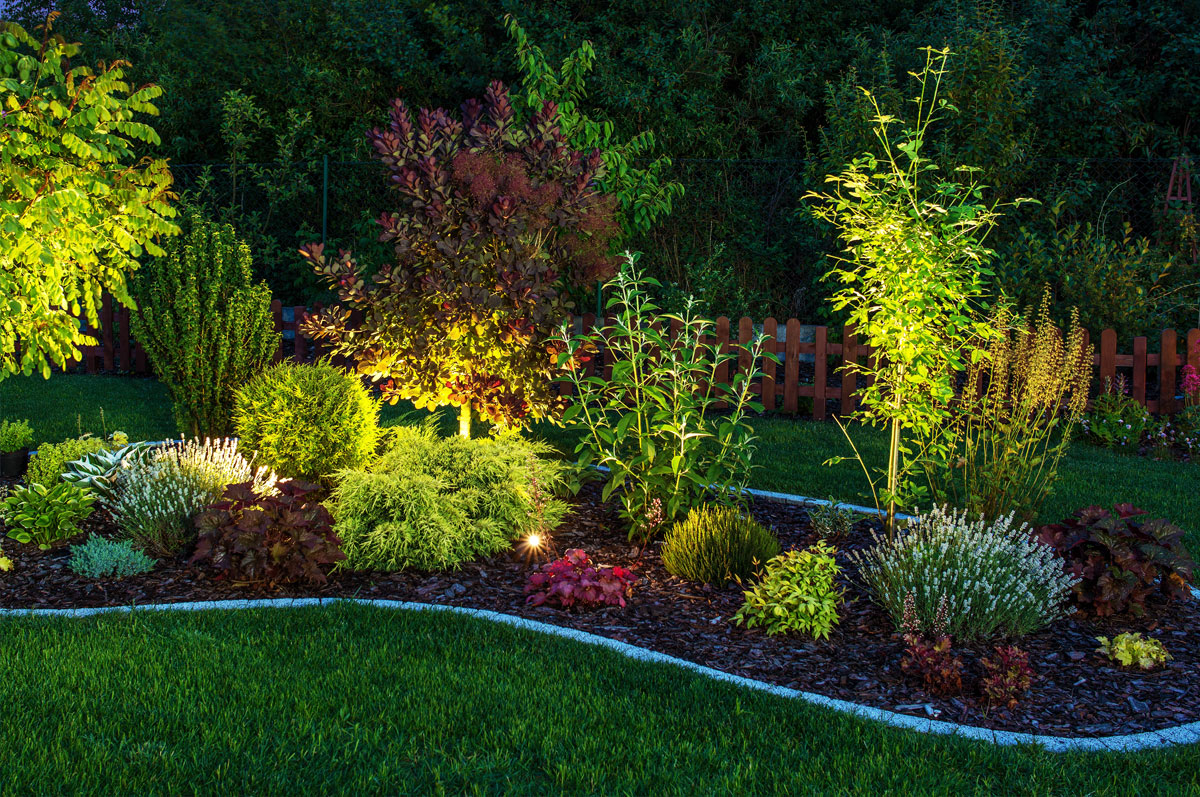Today's homes are as much about outdoor living as they are about the interior space. Having a beautifully designed garden and driveway can create the perfect space for relaxing or entertaining. Whether you keep it relatively simple or add water features, pathways, sculptures, or other design elements, it is important to choose the right lighting for your garden.
It can be helpful to think about lighting a landscape in the same way as you would if you were lighting a stage for a theater production. The lights are there to draw attention to certain features and to change the way that people view your yard. The parts of your garden that are not lit will fade into the darkness whereas the ones that are lit will become key focal points in your landscape. This gives you a lot of power in terms of which features you want to accentuate the most. You can change the way that people perceive your property simply by lighting different features.
Errors That Are Commonly Made When Lighting A Garden
When you are trying to come up with a lighting design for your landscape, it is usually beneficial to work with a professionally trained designer. You can think of the process as a collaboration between you and the designer. You can tell them your ideas and they can help you implement them.
As you design your lighting, keep in mind the natural tendency of the eye to be drawn to the area of your yard that is brightest. Because of that, you should do everything you can to avoid glare. Lights should always be pointed away from the sight line. Using louvers or cowls on spotlights can also help reduce glare. Even recessed uplights can benefit from shielding to prevent excess light from distracting from the overall look.
One common mistake that people make is adding too much light to their landscape. Ultimately, good landscaping design is as much about deciding which areas should remain in shadow as it is about deciding which areas should be well lit. At the same time, however, it is important to balance the lighting throughout the space. For instance, placing a spotlight on a single element like a tree can create an unbalanced look where the tree looks like it is floating with nothing around it. You can avoid this problem by layering lights, creating a soft increase in the amount of lighting as you get closer to the focal point. Ultimately, the most beautifully lit gardens are the ones that have prominent focal points without too much contrast. There should be a good balance of light and dark areas without any harsh lines dividing them.
In terms of cost, it can really vary depending on the lights that you choose. Interestingly, it may cost more to light a small garden than a large garden. People often choose elaborate lighting schemes for small areas, adding to the overall expense. This is particularly true for small garden areas such as courtyards that are designed to be focal points.
Lighting Design Tips From The Pros
Create a Soft, Subtle Lighting Effect - you can simulate the look of moonlight by positioning a spotlight in a tree. Just make sure that the spotlight is directed toward the ground. If you point it outward, it will come across as a security light rather than achieving the soft, beautiful lighting effect that you were going for.
Bigger Isn't Always Better - LEDs and stunning outdoor solar lanterns have made it possible to keep the size of your outdoor lighting relatively small. Keep in mind, however, that LED fittings usually require drivers. That means that you will need to find a place to camouflage waterproof boxes. If you don't have an outbuilding, you can tuck them away behind a hedge or in some nearby bushes.
The Color Of The Light Should Be Consistent - All of the bulbs that you put in your outside light fixtures should have the same color temperature. Make sure to look at the number assigned to the bulb rather than just relying on the manufacturer's description. For instance, warm white bulbs can vary in color temperature from one manufacturer to another. Typically, warm light in the 3000k range provides the most beautiful results in an outdoor setting.
Conceal Cables - Cables that are located outdoors should be properly protected. You can accomplish this by running them through tubing that has been reinforced with mesh. This can keep them from being damaged by wild animals.
Make Sure Your Connections Are Waterproof - Any electrical connections that are located outdoors should be totally waterproof. Otherwise, water may be able to find its way into your fittings.
Check For Proper Drainage - When placing lighting at ground level, you need to make sure that the ground around the lights drains properly. This is particularly important for recessed lighting.
Use Lights To Add Contrast - Find ways to add contrast to your landscape through the use of lighting. For instance, lighting every other stair can create a much more beautiful effect than lighting the entire stairway evenly.
